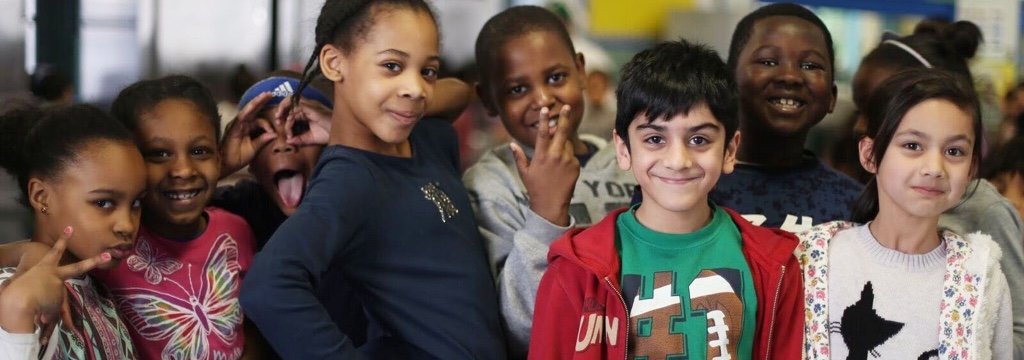Get more from InsideSchools
East Side Middle School
Share this school
Manhattan NY 10128
Our Insights
What’s Special
Challenging academics served with humor and warmth
The Downside
No lockers, auditorium or instrumental music program
In a modern building that calls to mind the work of Dutch artist Piet Mondrian, students at East Side Middle School put their knowledge to use in pursuit of passions and causes that range from the Marx Brothers to gay rights.
The school encourages student leadership at every turn. Two girls run the 80-student Reading Buddies program in which older kids pair up and read with elementary school children in the school next door. Others serve on the Manhattan Leadership Council and wrote legislation requiring all middle schools in District 2 to offer a gay-straight alliance. “We’re just waiting for Mayor de Blasio to sign it,” a teen said. “Next we’re working on the issue of mental health.”
Seventh- and 8th-graders cycle through 8-week “intensives,” on topics such as sex education, ballroom dance, financial literacy and a resiliency intensive centered on mindfulness. The research methods intensive seems to embody the East Side Middle ethos: students pick a research topic, such as the effects of carrying heavy backpacks on health, and disseminate their findings. As part of their research they weighed more than 100 backpacks and interviewed a chiropractor.
The school has a thriving culture of clubs. They range from the serious (clubs on hunger and hurricane relief) to the more lighthearted (the Harry Potter club and the juggling club). The Marx Brothers club got started when Principal David Getz noticed students didn’t pick up on a Marx Brothers reference, leading him to arrange a screening of Duck Soup.
For all the agency and voice teens enjoy here, the classrooms are hushed pockets of concentration. During our visit, one teacher was working to get her class to be chattier and more participatory. Staff members often drew out individual children for conversation, and teens replied in a comfortable, mature way: “We’re reading Behind the Lines to further enhance our study of the Civil War,” said one.
Sixth-graders become accustomed more easily to middle school with the help of a homeroom teacher for 90-minute classes in humanities (combined English and social studies) and 47-minute classes with other teachers that specialize in math, science, art or Spanish dance (the two upper grades study Spanish language). Humanities classes give teachers a smaller caseload of 60 students so they have more time to provide feedback on written work, including the memoirs all 6th graders write and submit for publication to Stone Soup Magazine, and the 10-page literary essays teens write in 8th grade.
In the policy-oriented science program, children tackle real-world problems and applications, aimed at understanding that most solutions have trade-offs. In one such lesson, students study the pros and cons of the production of three types of containers for water made of plastic, metal or glass. “There is no simple answer,” Getz pointed out.
The principal is a published author of children’s books and leads book clubs for students and parents. He is supportive, funny and kind with students. According to school surveys, he is trustworthy and a good manager.
For the all-important 7th grade year, the school offers core academic classes with two teachers, and preparation for the high school admission process, including individual student conferences. All 8th-graders sit for the Algebra 1 Regents exam. Eighth grade math classes are half-size to give students help getting ready.
Manhattan Youth After School offers classes that include debate, Model UN, robotics, computer coding, theater production, and sports teams, such as basketball, track, girl’s softball, boy’s baseball, soccer, volleyball and fencing. A math teacher brings teens downstairs to work with children in the District 75 special education program.
A few downsides: The school lacks lockers, an auditorium and an instrumental music program.
SPECIAL EDUCATION: Each grade has two ICT (Integrated co-Teaching) classes, inwhich 40 percent of the students have IEPs that mandate an ICT setting to address their special needs. ICT classes are team-taught and are slightly smaller in size, with about 28 children instead of 32.
ADMISSIONS: By lottery. Applicants eligible for free or reduced price lunch will be considered first for 20 percent of seats. District 2 priority. (Lydie Raschka, November 2017; updated 2019)
Read more

Comments